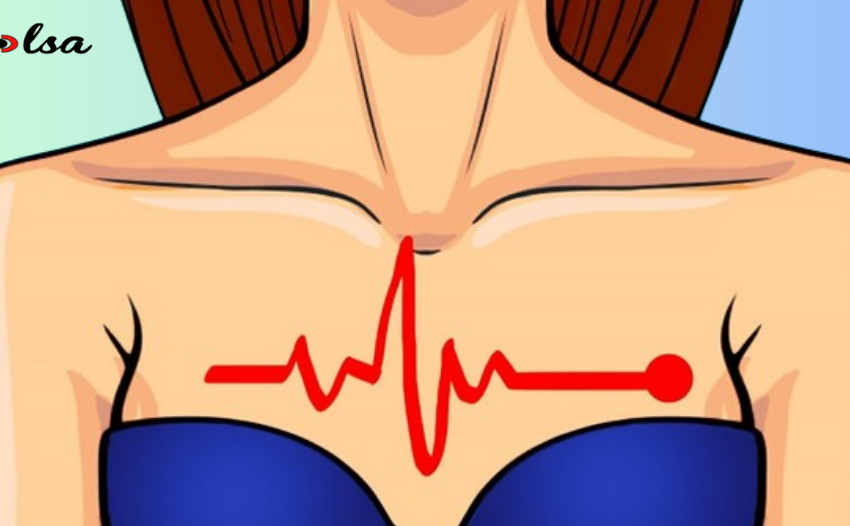Here are 7 warning signs that indicate clogged arteries
Recently, there has been a rise in the prevalence of cardiovascular diseases, especially atherosclerosis and clogged arteries. Atherosclerosis is a condition in which fat deposits accumulate on the walls of the arteries, causing them to harden and narrow. This restricts the flow of blood and oxygen to vital organs, increasing the risk of blood clots that can lead to life-threatening conditions such as heart attacks and strokes. The challenge of atherosclerosis is its often asymptomatic nature during its early stages, leaving many individuals unaware of its existence. As a result, sudden and severe cardiovascular events may occur. This article delves into the main causes of atherosclerosis, its symptoms, treatment methods, and preventive measures.
Understanding atherosclerosis and clogged arteries
Atherosclerosis refers to the narrowing of the arteries due to the accumulation of fatty deposits on their walls, which may lead to blockages. Arteries play a crucial role in transporting blood from the heart to the rest of the body, and their walls are lined with a thin layer called the endothelium, which maintains flexibility for blood to flow smoothly. Atherosclerosis occurs when this lining is damaged, often due to factors such as smoking, high blood pressure, and high levels of glucose and cholesterol.
Factors that contribute to atherosclerosis lead to the formation of plaques — sticky substances that include fat, cholesterol, calcium and other elements — on the walls of the arteries. As these plaques accumulate, the arteries become hardened, which may impede blood flow and cause complications such as tissue death or infection in different parts of the body. In addition, parts of these plaques can break off, leading to blood clot formation and serious complications such as strokes and heart attacks. While atherosclerosis can affect any artery, it usually occurs in the large arteries, with the potential to appear in childhood and progress over time.
Symptoms of atherosclerosis and blockage
Atherosclerosis often remains asymptomatic until the arteries become significantly narrowed or completely blocked, leading to medical emergencies such as heart attacks or strokes. Symptoms vary depending on the affected arteries:
Carotid arteries (brain arteries):
Weakness in the arms or legs.
difficulty breathing.
Speech difficulties.
Headache.
Numbness or pain in the face.
Temporary loss of vision.
Facial muscles droop or paralyze.
Sudden changes in personality and behavior in the elderly.
Coronary arteries (heart):
Source.
Vomiting.
Extreme anxiety.
weakness.
Renal arteries (kidney):
Anorexia.
Swelling of hands and feet.
Difficulty concentrating.
Peripheral arteries (arms, legs, pelvis):
Numbness and pain in the extremities.
Difficulty in practicing physical activities.
Erectile dysfunction in men.
Coldness in the lower legs or feet.
Non-healing ulcers on the toes or legs.
Hair loss in the feet or legs.
Weak or absent pulse in the legs or feet.
Painful cramps in the hips, thighs, or leg muscles.
Causes and risk factors
The exact cause of atherosclerosis is still unclear, but it often begins with damage to the inner layer of the artery. Contributing factors include high blood pressure, high triglyceride levels, smoking, obesity, diabetes, and infections from various sources, including autoimmune diseases.
Risk factors for atherosclerosis include smoking, older age, lack of exercise, being overweight or obese, high blood pressure, high cholesterol, diabetes, and family history of cardiovascular disease.
Methods of Treatment
Treating atherosclerosis involves a comprehensive approach, including lifestyle modifications, medications, and, in some cases, surgical interventions. Main treatment strategies include:
Lifestyle change:
Quit Smoking.
Regular exercise.
Follow a healthy diet to control weight, blood pressure and cholesterol levels.
pharmaceutical:
Statins and other cholesterol-lowering medications.
Blood pressure medications.
Antiplatelet medications to prevent blood clots.
Surgical interventions:
Angioplasty and stent placement to open narrowed arteries.
Bypass surgery to redirect blood flow around blocked arteries.
Conclusion
Atherosclerosis poses significant health risks, underscoring the importance of awareness, early detection, and proactive management. By addressing risk factors and adopting a heart-healthy lifestyle, individuals can reduce the impact of atherosclerosis and promote cardiovascular health. Regular medical checkups, especially for those with risk factors, play a crucial role in preventing and managing this potentially life-threatening condition.



